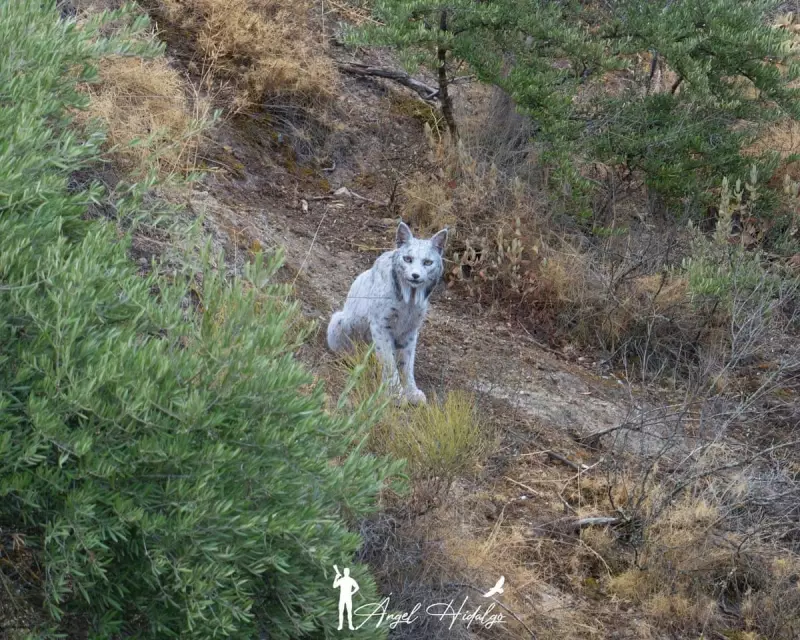
In a breathtaking wildlife moment that has electrified conservationists, cameras have captured one of nature's rarest sights: a pristine white Iberian lynx moving gracefully through the Spanish landscape.
The remarkable footage, obtained in a rural area of Spain, shows the ghostly feline with its distinctive snowy coat and piercing eyes – a stark contrast to the normally spotted or striped appearance of its species.
A Genetic Marvel in the Wild
Experts believe this stunning white coat results from leucism, a genetic condition that reduces pigmentation in the animal's fur while typically preserving normal eye colour. Unlike albinism, leucistic animals maintain their characteristic eye pigmentation, making this lynx's appearance particularly striking.
"This is an exceptionally rare sight," explained Dr Elena Rodriguez, a leading carnivore conservation specialist. "While we've documented occasional white lynx in captivity, capturing one in the wild on camera is unprecedented in recent decades."
Conservation Success Story
The sighting represents more than just a photographic marvel – it signals a dramatic turnaround for a species that once teetered on the brink of extinction. In 2002, fewer than 100 Iberian lynx remained in the wild, making them the world's most endangered feline species.
Thanks to intensive conservation efforts including captive breeding programmes and habitat restoration, their numbers have rebounded to approximately 2,000 individuals across Spain and Portugal.
"Every new lynx born represents hope," said conservation manager Miguel Ángel Simón. "But a genetically unique individual like this white lynx captures the public imagination in a way that underscores why we fight so hard to protect these magnificent creatures."
What Makes the Iberian Lynx Special
- Europe's last remaining lynx species
- Distinctive bearded face and tufted ears
- Specialised rabbit hunter – their survival is closely tied to rabbit populations
- Native only to the Iberian Peninsula
- Considered an "umbrella species" – protecting them helps preserve entire ecosystems
The appearance of this rare white individual comes as conservationists celebrate two decades of successful recovery efforts, though they caution that habitat fragmentation and disease still threaten the species' long-term survival.
As researchers continue to monitor this extraordinary feline, its existence serves as both a symbol of conservation success and a reminder of nature's endless capacity for wonder.





